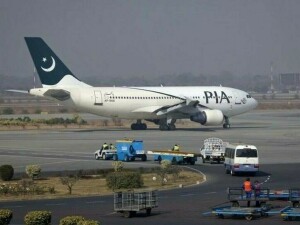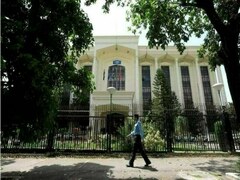Macroeconomic conditions have improved over the course of the program. Growth of 2 percent is expected in FY24 given continued recovery in the second half of the fiscal year.
The fiscal position continues to strengthen with a primary surplus of 1.8 percent of GDP achieved in the first half of fiscal year 2024, well ahead of projections and putting Pakistan on track to achieve its end-FY24 target primary surplus of 0.4 percent of GDP.
Inflation, while still elevated, continues to decline, and, with appropriately tight, data-driven monetary policy maintained, is expected to reach around 20 percent by end-June.
Assuming ongoing sound policies and reform efforts, inflation should return to the SBP’s target with growth continuing to strengthen over the medium term. Gross reserves have increased to around $8 billion, up from $4.5 billion at the start of the program, and are projected to continue being rebuilt over the medium term—IMF Executive Board Completes Second and Final Review of the Stand-By Arrangement for Pakistan - April 29, 2024
The International Monetary Fund (IMF) has successfully concluded its second review of the Stand-By Arrangement (SBA) loan, enabling the disbursement of Special Drawing Rights (SDR) 828 million, equivalent to US$1.1 billion.
With this disbursement, Pakistan has fulfilled the requirements of the SBA programme and received the total agreed amount of SDR 2.250 billion, approximately US$3 billion. It is a fact that the SBA has not only helped the country insulate itself against the prospect of default, but has also stabilized the economy, while successfully addressing the internal and external imbalance, as highlighted in the above-cited Press release of IMF.
As highlighted, the programme is centered on several key priorities. Firstly, implementing necessary fiscal adjustments and ensuring debt sustainability through effective current year budget management, secondly, safeguarding critical social expenditures to shield vulnerable segments of society from economic shocks and thirdly, addressing external shocks and resolving foreign exchange shortages by restoring proper functioning to the foreign exchange market.
Additionally, it focused on pursuing disinflationary measures through a stringent monetary policy stance and lastly, advancing structural reforms, directed toward enhancing viability of the energy sector and climate resilience and improving governance of state-owned enterprises (SOEs),
The successful completion of SBA’s programme has enabled Pakistan to access vital financial assistance, aiding its economic recovery and development endeavours. Moving forward, sustaining fiscal discipline, implementing structural reforms, and adhering to prudent monetary policies will be imperative to maintain the progress achieved under the SBA and to promote long-term economic stability.
IMF has provided key insights into Pakistan’s demographics and economic indicators. With a total population of 231.6 million and a per capita GDP of US $1,446.3, Pakistan’s Special Drawing Right quota is 2,031 million, and its poverty rate is 21.9%, with textiles as the main export. In terms of economic performance, Pakistan’s real GDP at factor cost for fiscal year (FY) 2023 was -0.2%, but projected to rise to 2.0% in FY2024 and 3.5% in FY2025.
Unemployment rates are projected at 8% for FY2024 and 7.5% for FY2025. Consumer prices are expected to average at 24.8% and 12.7% for FY2024 and FY2025, with end-of-period projections at 19.6% and 9.5% respectively. IMF has highlighted government finances, with revenues and grants projected to increase from 11.4% of GDP in FY2023 to 12.5% and 12.4% in FY2024 and FY2025, respectively.
However, government expenditure remains high, at 19.2% of GDP in FY2023, with projections of 20.0% and 19.8% for FY2024 and FY2025, respectively. IMF forecasts budget balances, including grants, for FY2024 and FY2025 at -7.4%, while balances excluding grants are -7.5% and -7.4% respectively.
Similarly, primary balances, both including and excluding grants, are projected at 0.4% for these years. Pakistan’s total general government debt, excluding IMF obligations, is estimated at 69.6% for the current fiscal year and 68.1% for FY2025.
External general government debt projections stand at 26.2% and 25.0%, while domestic debt is forecasted at 43.3% concurrently. Including IMF obligations, general government debt is projected at 72.1% and 70.0% for FY2024 and FY2025 respectively. General government and government-guaranteed debt, inclusive of IMF obligations, are expected to be 76.0% and 73.6% for these years.
Apart from various challenges, IMF acknowledges in its Press release that Pakistan’s persistent policy initiatives within the 2023 SBA have yielded positive results in reinstating economic stability.
There has been resurgence in moderate growth, alleviation of external pressures, and a gradual decline in inflation, though it remains relatively high. For navigating through the remaining challenges, Pakistan must leverage this stability by persisting with prudent macroeconomic policies and implementing structural reforms. This approach is aimed at fostering robust, inclusive, and enduring growth.
The IMF also acknowledges that Pakistan has achieved a significant primary surplus in the first half of FY2024 through revenue performance and federal spending restraint. Sustaining these surpluses demands ongoing revenue mobilization efforts and disciplined spending.
Stabilizing energy sector circular debt involved timely tariff adjustments and enhanced collection efforts. The State Bank of Pakistan maintains a tight monetary policy until inflation moderates, alongside FX market improvements.
The global lender expects that achieving robust, inclusive growth entails accelerating structural reforms and bolstering Benazir Income Support Programme. Priorities include SOE reforms, governance strengthening, and climate resilience enhancement. The current government is actively pursuing measures to revive economic growth in Pakistan.
Initiatives such as the privatization of Pakistan International Airlines and other SOEs are underway. However, a significant challenge persists in revenue mobilization, with the Federal Board of Revenue (FBR), as the primary revenue authority, failing to harness the country’s actual revenue potential. Criticisms are directed towards the complex and unrestricted assessment/audit powers granted to the taxation officers under various tax codes, hindering efforts to broaden the tax base.
Despite the presence of tax intelligence, education, and enforcement units, FBR has struggled in expanding the tax base, instead focusing primarily on maximizing revenue from existing taxpayers. This myopic and extractive approach undermines efforts to achieve sustainable revenue growth and fiscal stability.
There is a pressing need for FBR to adopt more proactive and comprehensive strategies for revenue collection, including enhancing tax compliance measures and simplifying tax regulations to encourage broader participation.
Transparency and accountability within FBR during tax collection processes have raised significant concerns. The inefficiencies and inconsistencies in revenue collection efforts have become apparent, particularly highlighted by a recent scandal involving the track and trace system pointing to incompetence and malpractice within FBR.
At this critical juncture where the government seeks to increase revenue collection, there are challenges arising from purportedly misguided information provided by FBR officials. Both the Prime Minister and Finance Minister have relied on inaccurate figures, including a disputed amount of Rs. 2.7 trillion allegedly stuck in litigation.
However, a significant number of these disputes have already been resolved in favour of taxpayers. To address these issues, proactive measures must be taken to bolster transparency and accountability within FBR. Strengthening oversight mechanisms and implementing reforms to streamline tax collection processes can enhance efficiency and effectiveness.
In addition to these measures, promoting privatisation initiatives for SOEs can invigorate economic growth by attracting investment and fostering competition. Furthermore, reforms to modernize labour laws and creating an attractive environment for foreign investment are imperative for long-term economic prosperity. By pursuing these strategies, we can improve revenue collection, stimulate sustainable growth, and attract investment for inclusive development.
Copyright Business Recorder, 2024
The writer is a lawyer and author of many books, and Adjunct Faculty at Lahore University of management Sciences (LUMS), member of Advisory Board and Visiting Senior Fellow of Pakistan Institute of Development Economics (PIDE). She can be reached at [email protected]
The writer is a lawyer and author of many books, and Adjunct Faculty at Lahore University of management Sciences (LUMS) as well as member of Advisory Board and Visiting Senior Fellow of Pakistan Institute of Development Economics (PIDE). He can be reached at [email protected]
The writer is a US-based corporate lawyer, and specialises in white collar crimes and sanctions compliance. He has written several books on corporate and taxation laws of Pakistan. He can be reached at [email protected]






















Comments
Comments are closed.